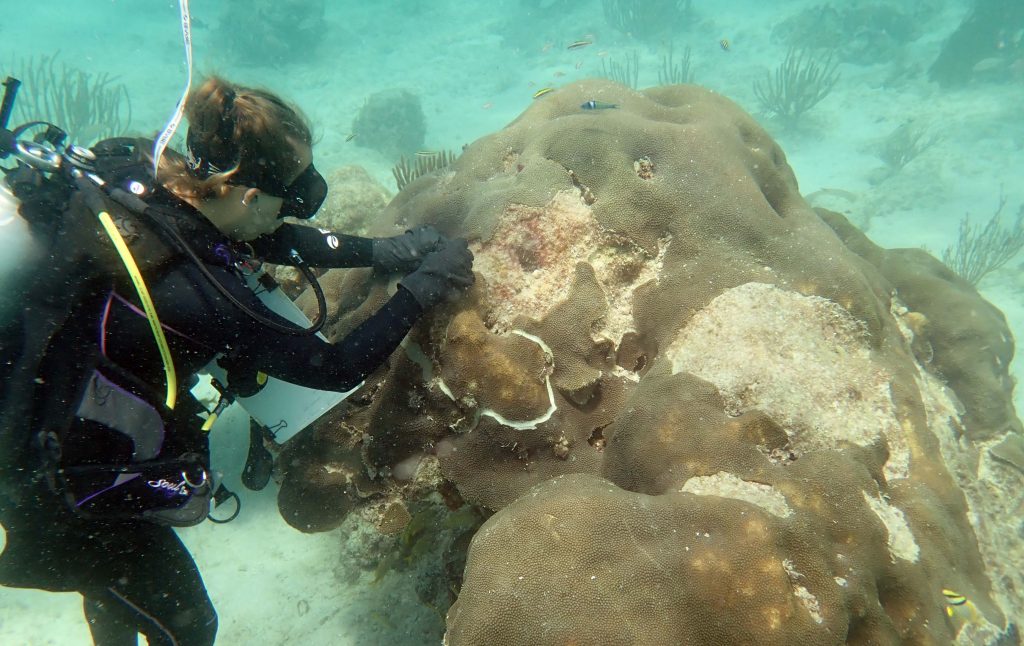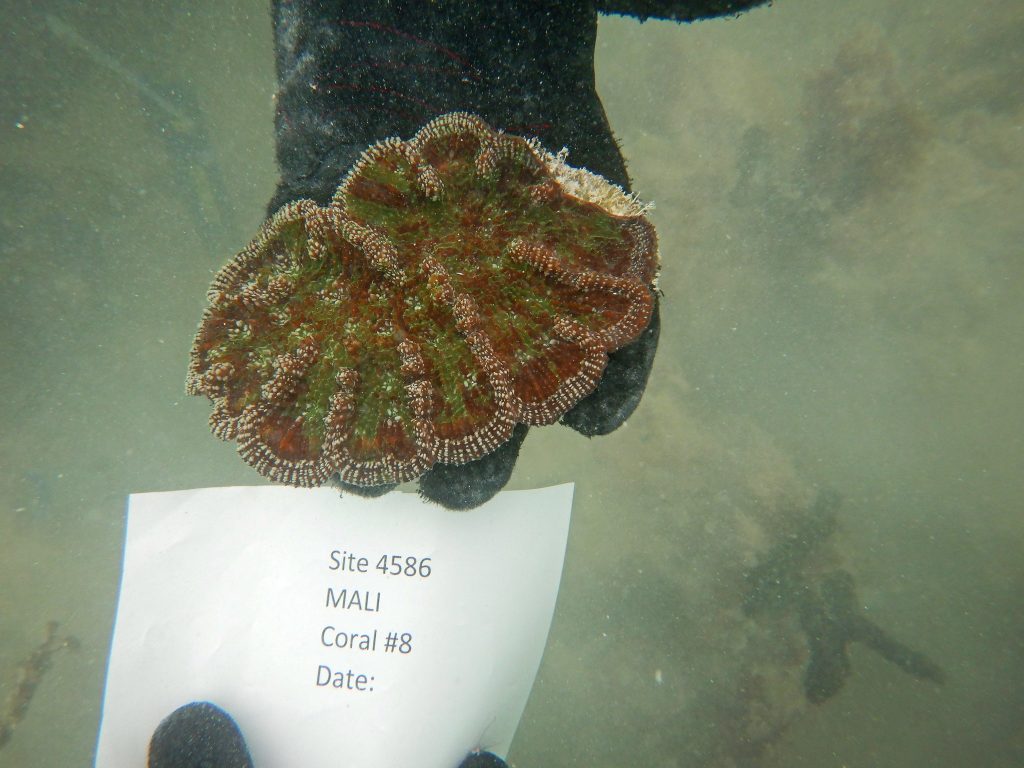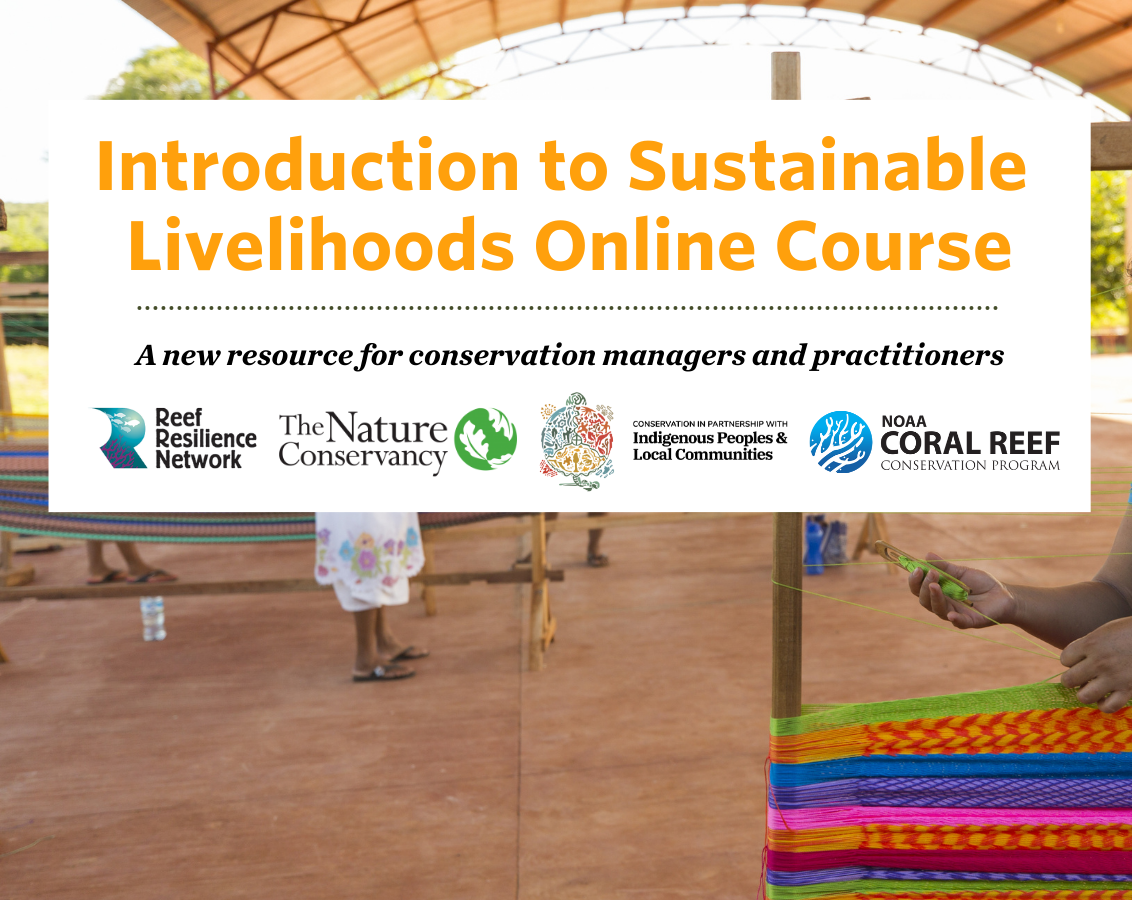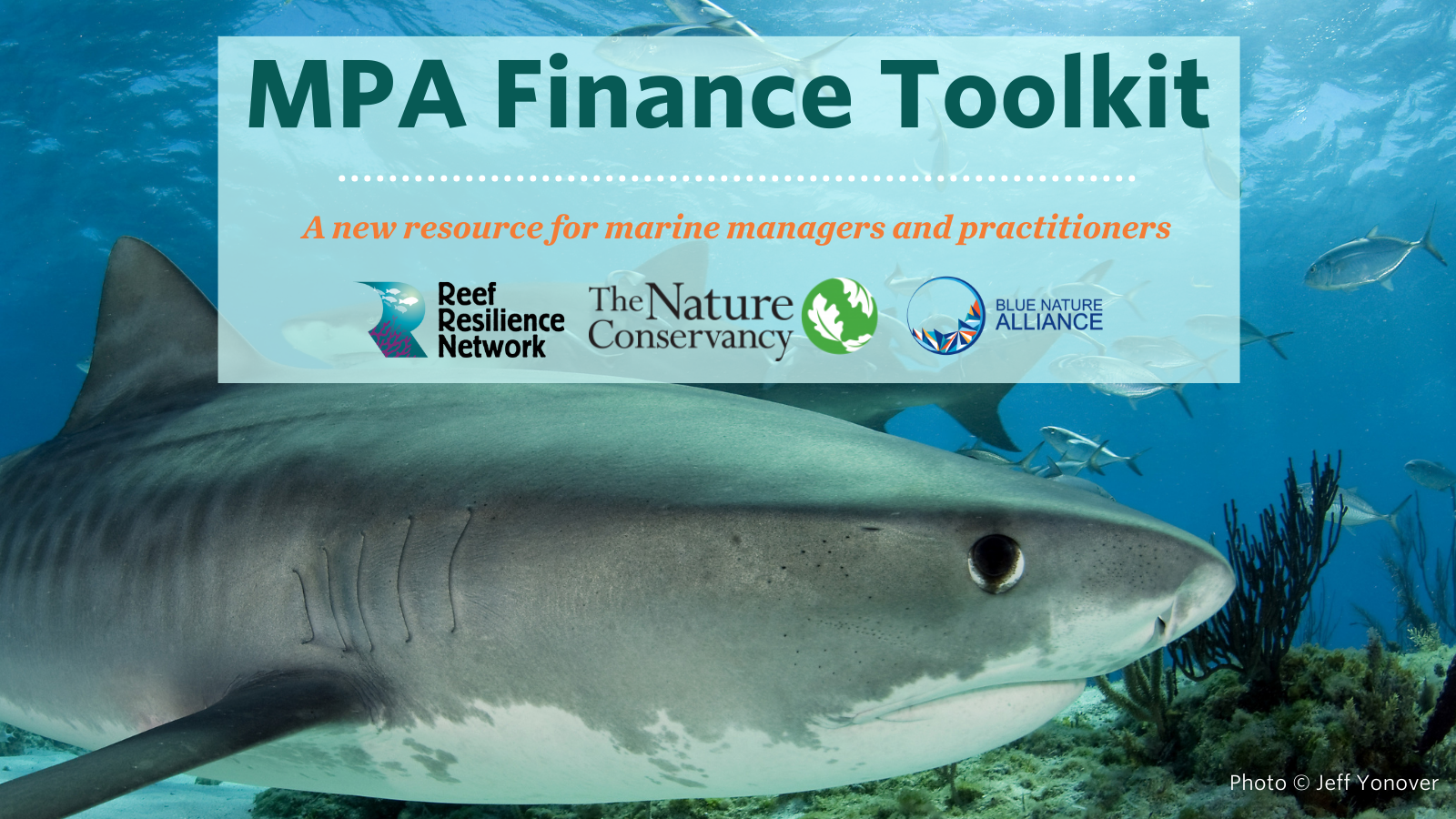Management and Interventions for Florida’s Stony Coral Tissue Loss Disease Outbreak
Location
Florida, USA (and wider Caribbean Sea)
The challenge
Coral reefs in Florida, as well as in several countries and territories throughout the wider Caribbean, are suffering from an outbreak of a lethal disease called stony coral tissue loss disease (SCTLD). Several factors make this disease unique and profoundly troubling. Compared to ‘routine’ outbreaks of most other coral diseases, the SCTLD has a particularly large geographic range and has been ongoing for several years without abating. The disease also has an extremely rapid progression at the colony and reef scale, very high rates of mortality, and affects a variety of coral species that comprise the Florida reef ecosystem. Perhaps most troubling, it affects all of the massive reef-building species that form the foundational structure of the region’s reefs. Approximately half of Florida’s forty-five species of stony corals are vulnerable to this disease.
Although the exact pathogen(s) remain unknown, laboratory experiments have shown that the disease can be transmitted to other corals through direct contact and through the water, underscoring the challenge of containing the disease in a dynamic ocean environment. Researchers are working to identify potential pathogens and relationships with environmental factors, as well as identify genotypes of corals that may exhibit some level of resistance to the disease. Researchers are testing strategies to treat diseased colonies in the field, applying various treatments to the lesions that form on the colony as the disease progresses, and working in the laboratory to determine whether there are ‘whole colony’ level treatments (e.g., probiotics) that could be developed and applied in the field.
The severity and extent of the disease has also spurred a concerted effort to secure samples of the most vulnerable, structurally important, or iconic species in land-based facilities. The hope is that stewardship of these species will allow for additional research that will support restoration efforts that will clearly be needed in the future.
Actions taken
Investigation of Pathogen(s)
Corals contain an assemblage of microbes and algae co-existing as a complex system, which makes the identification of disease pathogens an intricate task. Additionally, corals are in an open system – the ocean – with constant input of microbes from the environment, further complicating the investigative process.
Bacteria can be a primary pathogen or an opportunistic pathogen attacking corals with depressed immune function. Some of these pathogens may be normally associated with corals and are harmless until triggered by an environmental change. The relatively new scientific field of coral disease has identified only about a dozen pathogens in the world, and in very few cases have these pathogens been demonstrated as the definitive causative agent in the disease. Further, some that were initially demonstrated as such did not hold up through further research.
Though experiments are ongoing, current hypotheses include that secondary pathogens are influencing the virulence of SCTLD, while environmental factors may be affecting disease progression and transmission. The identification and isolation of the pathogen(s) causing SCTLD will be important for the development of diagnostic tools and more targeted treatments.
While the exact pathogen remains unknown, laboratory studies by Dr. Blake Ushijima of the Smithsonian Marine Station and field observations by coral ecologist Dr. Greta Aeby of the University of Qatar, suggest that multiple microorganisms may play a role and it is possible that an initial pathogen attacks the healthy coral and opportunistic pathogens then accelerate the disease. Alternatively, the disease may begin its progression more indirectly. Dr. Andrew Baker at University of Miami is beginning research to determine whether pathogens may initially infect endosymbiotic algae, with secondary infections affecting host corals. Regardless, the pathogen(s) is known to spread through direct coral-to-coral contact as well as through water, which complicates both diagnosis and treatment.
Interventions and Treatments
Scientists and resource managers are coordinating interventions and treatments with the goal to slow or stop the spread of SCTLD. Early laboratory trials included many physical (e.g., clay barriers), chemical (e.g., antiseptic treatments), and combination (e.g., antiseptic treatment with a physical ‘firebreak’ around diseased tissue) treatments. Initially, treatments using chlorinated epoxy with a firebreak and antibiotic paste were identified as the most promising options.
Field tests found that chlorinated epoxy was largely ineffective on most species and was very time intensive, but the antibiotic paste halted disease progression in 75% to 95% of lesions, with species specific differences. As such, practitioners in Florida are focusing on antibiotic treatments in the field but continuing to trial new lesion-specific treatments, considering applied antibiotic treatments that can be implemented at the full-colony scale, and creating probiotics that can be applied to diseased corals and perhaps coral outplants to increase survival. Treated colonies are revisited every few months to check health and to treat any new lesions, and many corals need to be retreated due to new lesion formation. Through these methods, substantial numbers of the largest, oldest colonies that provide the greatest ecosystem services have been saved.

Scientists apply an antibiotic paste to the margin of healthy and diseased coral to help stop the spread. Photo © Nova Southeastern University
Experimental work conducted by the Fish and Wildlife Research Institute of the Florida Fish and Wildlife Conservation Commission (FWRI-FWC) showed that substantial treatment efforts within a small area (5 m by 5 m) of an affected reef did little to alter disease trajectory within the study plot. However, efforts on individual corals are successful at slowing and/or halting colony mortality. Work led by Dr. Karen Neely at Nova Southeastern University has treated over 1,400 priority corals within the Florida Keys National Marine Sanctuary. Dr. Brian Walker (Nova Southeastern University) and Dr. Josh Voss (Florida Atlantic University Harbor Branch Oceanographic Institute) have treated an additional 500 colonies in the Southeast Florida region, and Biscayne National Park started intervention activities in late 2019.
How successful has it been?
Intervention on individual priority colonies with topical antibiotic has reduced mortality rates to less than 2% on treated corals. Initial treatments on lesions are highly effective, and follow-up monitoring suggests that new lesion development may decrease over time. Though long-term health assessments and retreatments will continue to be necessary, the frequency and intensity of these is likely to decrease with time.
Other intervention actions, including chlorinated epoxy and modifications to the topical paste using natural products, have so far proved unsuccessful with disease progression and mortality rates only slightly lower than on non-treated corals. Still, these treatment options are being modified and trialed in an effort to develop effective treatments that have limited unintended environmental impacts.
At many sites, the vast majority of remaining corals are those that have been saved through active treatment. These corals provide the habitat, ecosystem services, and brood stock for future generations at these sites.
Coral Rescue
The Florida Coral Rescue Team is co-led by FWC and National Oceanic and Atmospheric Administration (NOAA)’s National Marine Fisheries Service and consists of federal and state agencies, non-profit organizations, universities, and Association of Zoos and Aquariums (AZA) partners. This group is working to “rescue” (collect) healthy corals from ahead of the disease boundary and place them in land-based aquaria to prevent them from becoming infected, to preserve genetic diversity, and to serve as breeding stock for future restoration activities. The AZA, who joined the efforts in late 2018, has more than 20 facilities across the country that either currently house, or are in the process of preparing to house, rescued corals. In the meantime, the rescued corals are being held at intermediate holding facilities in Florida, including the University of Miami, Nova Southeastern University, Florida Aquarium, and Mote Marine Laboratory.
Thus far, just under 1,500 corals representing the 15 most highly susceptible species have been collected from Florida Keys National Marine Sanctuary and Dry Tortugas National Park waters in a total of five live-aboard missions and some small-boat work off Key West. In order to ensure that enough genetic diversity is collected to support propagation activities, a total of 4,400 coral colonies from the full list of 22 high- and medium-priority susceptible species are targeted for collection. Real-time data on the status of these efforts are available at the Coral Rescue Dashboard.

Corals are collected and placed in a bag for safe transport. At the surface, corals are measured and evaluated for condition, genetic samples are taken, and each is then mounted on a ceramic tile, with extra care taken to ensure that live tissue is not touching the tile or epoxy. Photo © Florida Fish and Wildlife Conservation Commission
In the future, Florida plans to build out breeding facilities where the rescued corals will be able to spawn and settled larvae will be raised for large-scale restoration of the reefs. Some of the corals that were collected this summer and held in outdoor intermediate facilities spawned on their predicted cycle and the larvae were opportunistically settled and are growing alongside the rescued corals.
Lessons learned and recommendations
Have a plan in place before you need it. As Florida grappled with how to address this unprecedented outbreak, managers turned to two documents that had been written for other jurisdictions for guidance: Hawaii’s Rapid Response Contingency Plan and the Great Barrier Reef Marine Park Authority’s Reef Health Incident Response System.
Have a lot of back-up plans. While having a plan ahead of time is important, it is equally important to be ready and willing to switch to contingency plans at a moment’s notice. Flexibility and adaptive management are key!
Have a mechanism in place to determine whether and when you need to respond. Pre-designated thresholds help to guide when action should be taken.
A successful response requires a successful monitoring program. In order to track what is working, and potentially even more importantly what isn’t working (see bullet 2 above), make sure to monitor the outcome in a way that is comparable across methods and regions.
Know who will lead your response. In the simplest-case scenario, there will be one agency or organization with fiduciary responsibility and/or a government mandate to lead the response. Where that is not the case, think about how the response should be carried out ahead of time. Responses can be effective through either a top-down or bottom-up approach (or a combination of the two) but it is critical to ensure that everyone knows which agency or group is ultimately responsible for making decisions.
Know your experts. Identify and reach out to experts in the field prior to or immediately following a disturbance and think outside the box. Experts from the Centers for Disease Control and Prevention and the U.S. Geological Survey’s National Wildlife Health Center, microbiologists, geneticists, epidemiologists, biocontainment specialists, and many other agencies and specialties who don’t often work directly with coral ecologists have been engaged to help widen the thinking about how to address this outbreak.
Anticipate regulatory hurdles. Engage regulatory agencies as early as possible, and preferably even before an event occurs (i.e., as you develop theoretical response plans), to mitigate unanticipated delays in getting experimental measures approved.
People want to help. In any disaster, people want to help in the response. Identify skill sets that could be useful and try to engage the public in a meaningful way.
Funding summary
Since 2015, just over $10 million has been put towards direct disease response efforts in Florida. The main source of funding has been the Florida State Legislature with additional support provided by the Florida Department of Environmental Protection (FDEP), FWC, NOAA, U.S. Environmental Protection Agency, National Fish and Wildlife Foundation, and National Science Foundation. Additionally, a significant amount of in-kind staff time has been dedicated to these efforts from a variety of Federal and State agencies, universities, local governments, and non-profits.
An approximate breakdown of the response budget is as follows:
- Coral Rescue: 42%
- Intervention: 27%
- Research: 14%
- Propagation: 5%
- Reconnaissance & Monitoring: 4%
- Data Management: 3.5%
- Communications & Outreach: 1%
- Other: 3.5%
Read more about projects that have been funded by FDEP, and those that have been completed by individual working groups.
Lead organizations
Florida’s response is led by four agencies: FDEP, FWC, NOAA, and the National Park Service. However, the outbreak has necessitated an ‘all-hands-on-deck’ response, with expertise and resources being drawn from scores of organizations, including state and federal agencies, academic and research institutions, non-profit conservation organizations and zoos and aquariums throughout the US. A partial listing is shown at the Florida Keys National Marine Sanctuary website.
Resources
Stony Coral Tissue Loss Disease Resources


